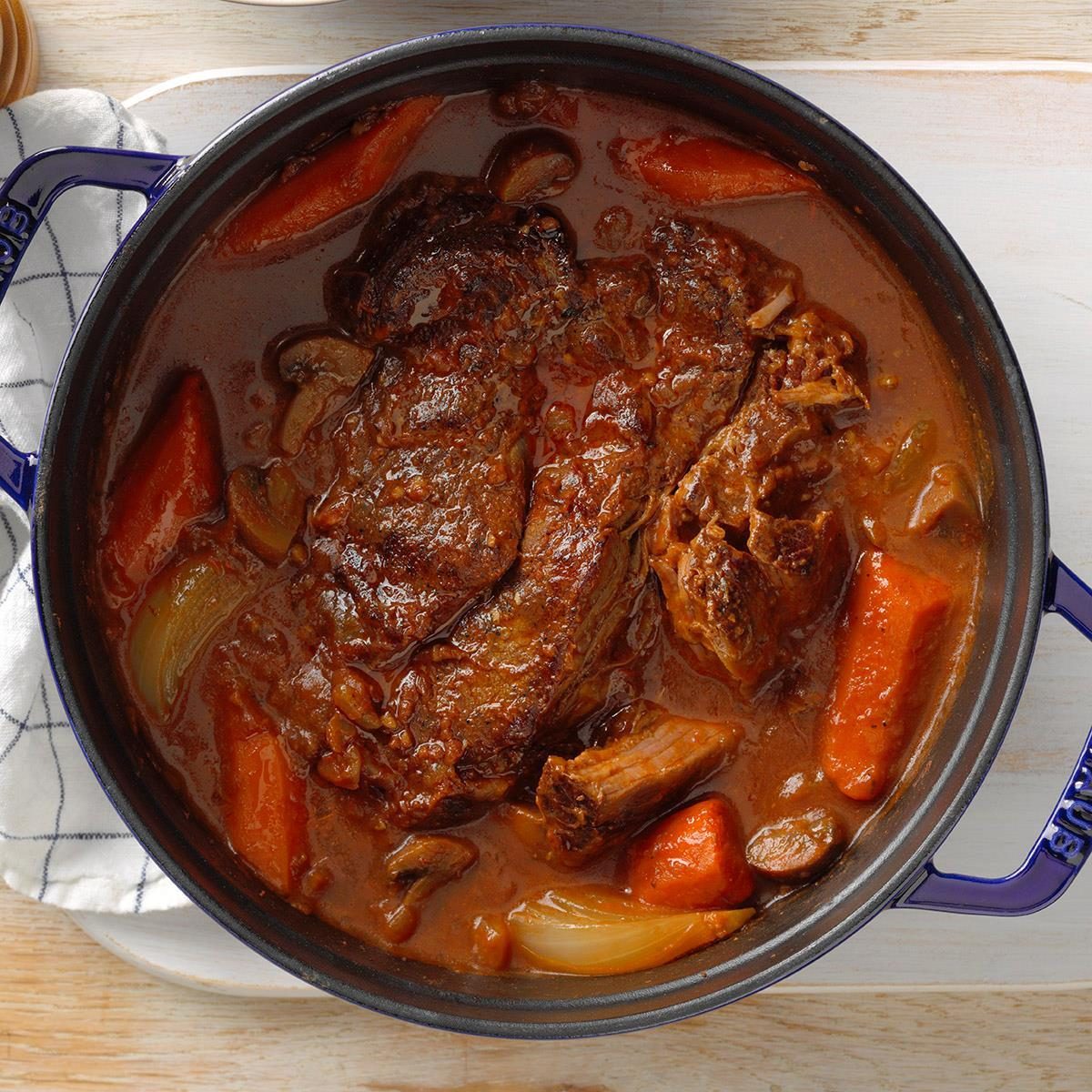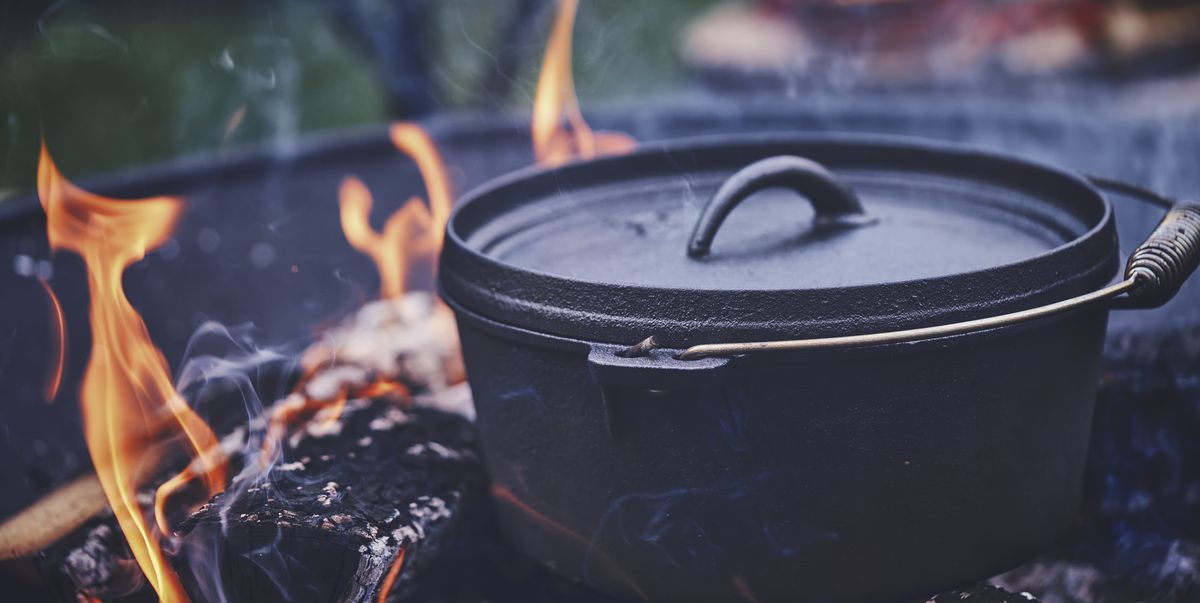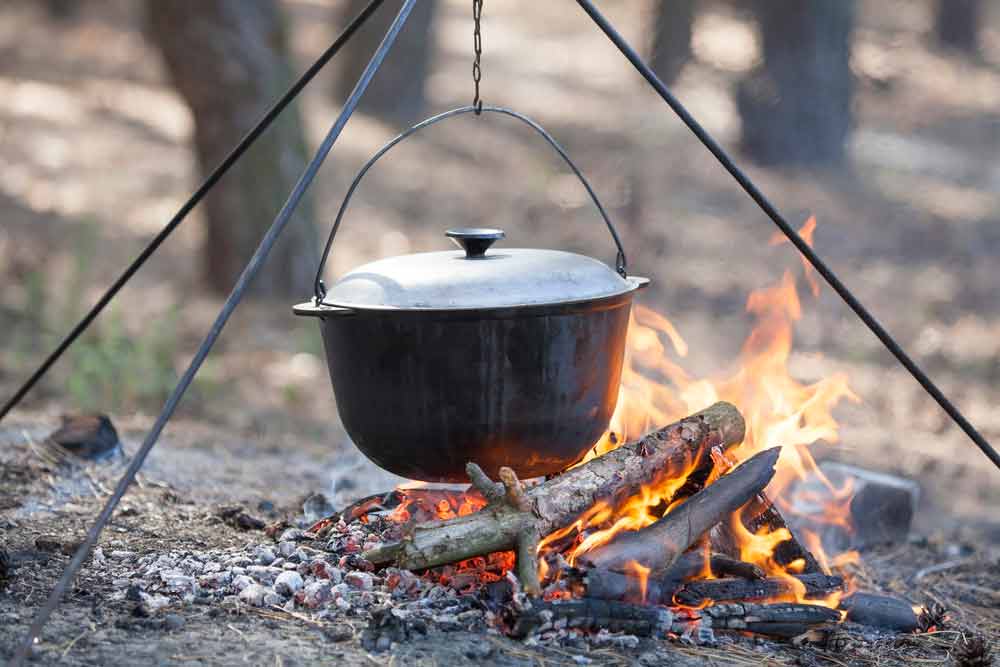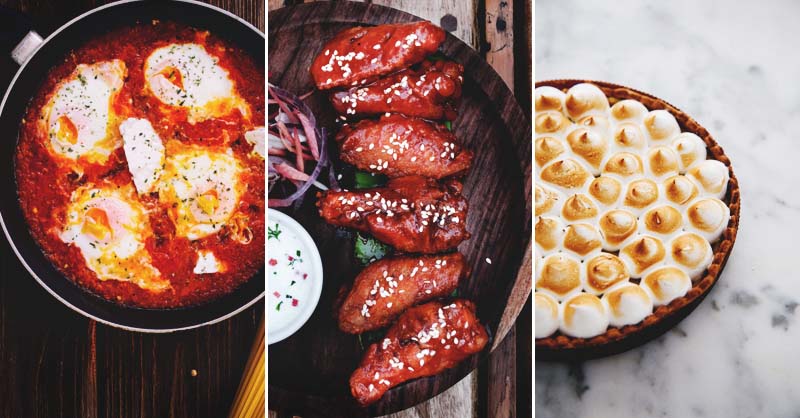Dutch oven
A Dutch oven, Dutch pot , or casserole dish (international) is a thick-walled cooking pot with a tight-fitting lid. Dutch ovens are usually made of seasoned cast iron; however, some Dutch ovens are instead made of cast aluminium, or ceramic. Some metal varieties are enameled rather than being seasoned, and these are sometimes called French ovens. The international name casserole dish is from the French casserole which means "cooking pot". They are similar to both the Japanese tetsunabe and the sač, a traditional Balkan cast-iron oven, and are related to the South African potjie, the Australian Bedourie oven and Spanish cazuela. During the 17th century, brass was the preferred metal for English cookware and domestic utensils, and the Dutch produced it at the lowest cost, which, however, was still expensive. In 1702, Abraham Darby was a partner in the Brass Works Company of Bristol, which made malt mills for breweries. Apparently in 1704, Darby visited the Netherlands, where he studied the Dutch methods of working brass, including the casting of brass pots. Darby learned that when making castings, the Dutch used molds made of sand, rather than the traditional loam and clay, and this innovation produced a finer finish on their brassware. In 1706 he started a new brass mill in the Baptist Mills section of Bristol. There, Darby realized that he could sell more kitchen wares if he could replace brass with a cheaper metal, namely, cast iron. Initial experiments to cast iron in sand molds were unsuccessful, but with the aid of one of his workers, James Thomas, a Welshman, he succeeded in casting iron cookware. In 1707 he obtained a patent for the process of casting iron in sand, which derived from the Dutch process. Thus, the term "Dutch oven" has endured for over 300 years, since at least 1710. The Merriam-Webster Dictionary and Researching Food History agree that several very different cooking devices were called "Dutch ovens" — a cast-iron pan with legs and a lid; a roughly rectangular box that was open on one side and that was used to roast meats, and a compartment in a brick hearth that was used for baking. American Dutch ovens changed over time during the colonial era. These changes included a shallower pot, legs to hold the oven above the coals, and a lid flange to keep the coals on the lid and out of the food. Paul Revere is credited with the design of the flat lid with a ridge for holding coals as well as the addition of legs to the pots.
Source: Wikipedia
:max_bytes(150000):strip_icc()/356023-f93026e3d8f647bcb0a9030bd0a302b2.jpg)




